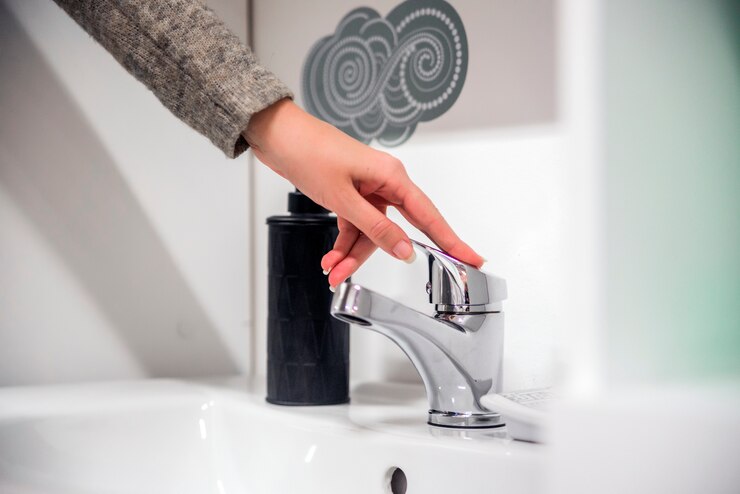Introduction
In today’s world, where environmental sustainability is becoming increasingly crucial and adopt Water-saving fixtures, the focus on water conservation has intensified. Water-saving fixtures play a pivotal role in this endeavor by promoting efficient water usage without compromising on convenience or comfort.
Understanding the Need for Water Conservation
Water scarcity is a global concern, with many regions facing water stress due to overconsumption and inefficient use. Water-saving fixtures offer a practical solution to reduce water wastage and preserve this precious resource for future generations.
Types of Water-Saving Fixtures
Low-Flow Toilets
One of the most significant sources of water usage in households, traditional toilets consume a substantial amount of water per flush. Low-flow toilets utilize innovative designs to minimize water usage while maintaining optimal performance.
Low-Flow Showerheads
Showering accounts for a significant portion of residential water consumption. Low-flow showerheads regulate water flow, ensuring a satisfying shower experience while conserving water.
Faucet Aerators
Faucet aerators attach to the tip of faucets, mixing air with water to reduce flow while maintaining adequate pressure. This simple yet effective device significantly decreases water usage during everyday tasks such as handwashing and dishwashing.
Benefits of Installing Water-Saving Fixtures
The installation of water-saving fixtures offers numerous benefits beyond conservation. Homeowners can experience lower utility bills, reduced strain on water resources, and a sense of environmental responsibility.
Factors to Consider Before Installing Water-Saving Fixtures
Before upgrading to water-saving fixtures, several factors warrant consideration. Evaluating water efficiency ratings, budget constraints, and compatibility with existing plumbing systems are essential steps in the decision-making process.
Installation Process of Water-Saving Fixtures
DIY vs. Professional Installation
While some homeowners may opt for do-it-yourself installation to save costs, professional installation ensures proper fitting and functionality, minimizing the risk of leaks or malfunctions.
Tips for Effective Installation
Regardless of the chosen installation method, following manufacturer guidelines and seeking expert advice can streamline the process and maximize the benefits of water-saving fixtures.
Impact of Water-Saving Fixtures on Utility Bills
Water-saving fixtures can lead to substantial savings on monthly utility bills by reducing water consumption without sacrificing performance. Over time, these savings offset the initial investment, making them a cost-effective choice for homeowners.
Maintenance and Care for Water-Saving Fixtures
Regular maintenance is essential to ensure the continued efficiency and longevity of water-saving fixtures. Simple tasks such as cleaning aerators and checking for leaks can prevent costly repairs and preserve water-saving capabilities.
Challenges and Limitations of Water-Saving Fixtures
While water-saving fixtures offer significant advantages, challenges such as initial costs and limited design options may deter some consumers. Additionally, compatibility issues with older plumbing systems may necessitate additional modifications or upgrades.
Case Studies: Successful Implementation of Water-Saving Fixtures
Numerous case studies highlight the successful integration of water-saving fixtures in residential and commercial settings, showcasing their efficacy in real-world scenarios and inspiring broader adoption.
Innovations in Water-Saving Fixture Technology
Continual advancements in technology have led to the development of innovative water-saving fixtures with enhanced functionality and aesthetics. From smart faucets to self-regulating shower systems, these innovations redefine the standards of water efficiency.
Environmental Benefits of Water-Saving Fixtures
Beyond individual savings and convenience, widespread adoption of water-saving fixtures contributes to broader environmental conservation efforts, reducing the strain on freshwater resources and mitigating the impacts of water scarcity and pollution.
Educational Campaigns and Government Incentives
Educational initiatives and government incentives play a crucial role in promoting the adoption of water-saving fixtures. Public awareness campaigns raise consciousness about water conservation, while incentives such as rebates and tax credits encourage investment in sustainable technologies.
Consumer Awareness and Adoption
As consumer awareness of environmental issues grows, the demand for water-saving fixtures continues to rise. Manufacturers and retailers play a vital role in educating consumers about the benefits of these fixtures and facilitating their adoption through accessible pricing and innovative marketing strategies.
Conclusion
In conclusion, water-saving fixtures represent a practical and effective solution for addressing water scarcity and promoting sustainable living practices. By incorporating these fixtures into homes and businesses, individuals can play a proactive role in conserving water resources and safeguarding the environment for future generations.
FAQs (Frequently Asked Questions):
- Are water-saving fixtures compatible with all plumbing systems?
- While most modern fixtures are designed for compatibility with standard plumbing configurations, older systems may require modifications for optimal performance.
- Do water-saving fixtures require special maintenance?
- Water-saving fixtures typically require minimal maintenance, such as periodic cleaning and inspection for leaks. Following manufacturer guidelines ensures optimal functionality.
- Can water-saving fixtures really save money on utility bills?
- Yes, water-saving fixtures can lead to significant savings on monthly water bills by reducing consumption without sacrificing performance. Over time, these savings offset the initial investment.
- Are there any government incentives for installing water-saving fixtures?
- Many governments offer incentives such as rebates and tax credits to encourage the adoption of water-saving technologies. Check with local authorities or utility providers for available programs.
- What are some common challenges associated with water-saving fixtures?
- Challenges such as initial costs, compatibility issues, and limited design options may pose obstacles to widespread adoption. However, advancements in technology and increased consumer awareness are addressing these challenges over time.


